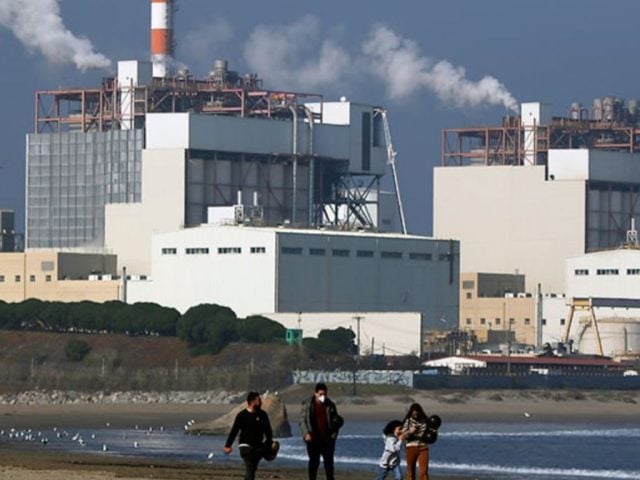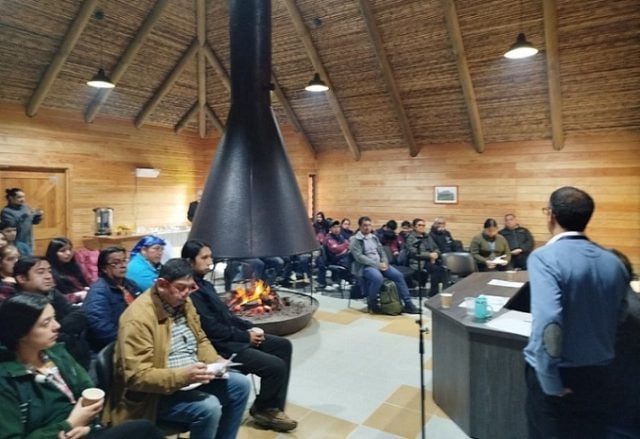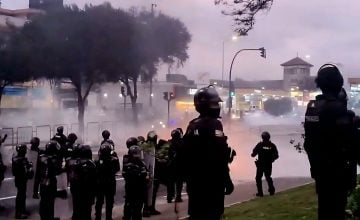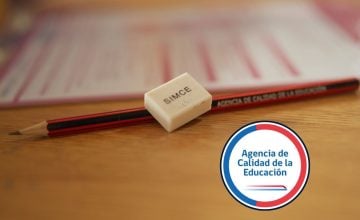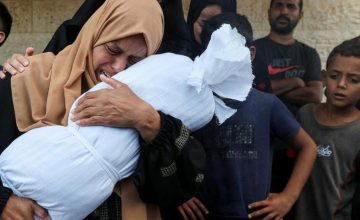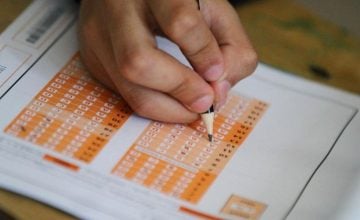The Valparaíso Regional Health Authority confirmed that 56 people in Puchuncaví—mostly students and staff at local schools—were diagnosed with toxic effects from exposure to gases, fumes, and vapors, sparking alarm in this so-called «sacrifice zone».
In an official statement, the agency said it carried out inspections at the Oxiquim plant and at four schools and a kindergarten in the area. The move came after students reported signs of poisoning, pointing to a potential new mass contamination event in a commune where the concentration of industrial activity and the release of high volumes of potentially toxic substances have long harmed the environment, quality of life, and residents’ health.
The latest episode resulted in walk-in visits to the Las Ventanas Rural Urgent Care (SUR) and the Puchuncaví SUR clinics. Those affected came from La Greda School, General Velásquez School, the Sargento Aldea Educational Complex, and the Amanecer Multi-Disability School.
The Health Ministry noted that “based on preliminary reports, 56 people were coded T59,” a classification used for injuries, poisoning, or other effects caused by inhalation or exposure to toxic gases, fumes, or vapors not elsewhere classified.
Given the situation, the Epidemiology team will monitor the health of those affected to track any potential after-effects from the exposure.
The sites inspected included the Oxiquim facility, La Greda School, Campiche School, Amanecer Multi-Disability School, La Chocota School, and the Renacer Kindergarten. So far, the results of these inspections have not been released, and the community is still waiting for answers.
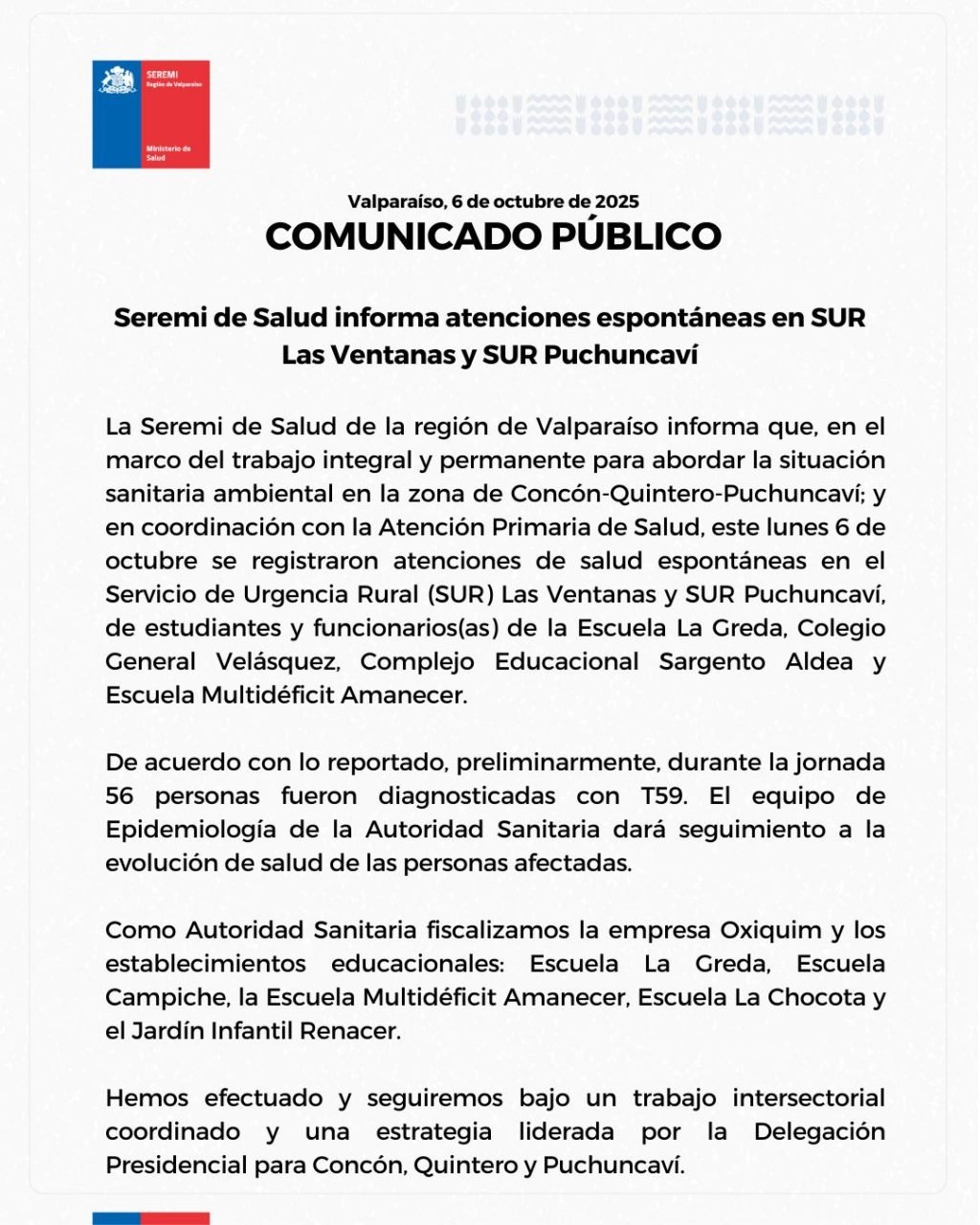
Poisoning symptoms and strong chlorine odor
According to Radio Valparaíso, staff at the Integral Amanecer School in the Ventanas area of Puchuncaví reported that students and personnel exhibited symptoms consistent with poisoning, including severe dizziness and headaches, with some cases of nausea, stomach pain, and itching.
The Central Coast Local Public Education Service (SLEP Costa Central) said in a statement that “air conditions around the school today are poor, with a strong chlorine smell in the area.”
As a precaution, the agency activated a protocol requiring students to remain inside classrooms with air purifiers running; to wear masks when going to the yard or the bathroom; and to suspend all outdoor activities, including workshops and physical education classes.
“Classes continue as normal. Any changes will be communicated,” the schools’ governing body added, according to the outlet.
Meanwhile, members of the group “Mujeres de Zona de Sacrificio Quintero – Puchuncaví en Resistencia” reported on social media that “poor air conditions persist in Quintero Bay, with strong gas and chlorine odors.”
“Our children are confined to their classrooms with air purifiers. This cannot keep happening in Puchuncaví or Quintero. Authorities, we are not extraterrestrials—this is a national disgrace. How long will you keep ignoring us?” they said.
Corporate responsibility and calls for sanctions
The contamination episodes reported over the weekend and on Monday affected not only Puchuncaví but also neighboring Quintero. In both areas, residents and school communities reported strong gas and chlorine odors that caused dizziness, coughing, and general discomfort, especially among children.
The events prompted an immediate political response. Deputy Diego Ibáñez (FA) said he requested “urgent reports from the Superintendence of the Environment (SMA) and the Ministry of Health to clarify the causes of the toxic gases that forced children to stay indoors with air purifiers,” and he called for “comprehensive inspections of the bay’s companies.”
The lawmaker argued that “unfortunately, this situation is the responsibility of the companies.”
“We ask the Superintendence of the Environment to step up oversight and sanction those responsible, because we now have a new environmental crimes law that is much stricter and imposes far tougher penalties on polluting companies,” he said, as reported by Bio Bío Chile.
He also urged authorities not to let their guard down, despite statistics indicating a decrease in poisoning cases across the communes of the Valparaíso Region.
“Even if episodes have dropped compared with previous years, we cannot normalize a single additional case of an intoxicated child,” he emphasized.
This latest contamination event reinforces the designation of Puchuncaví and Quintero as “sacrifice zones,” areas where an extractive industrial model and dense clusters of companies have historically outweighed public health and environmental protection.
